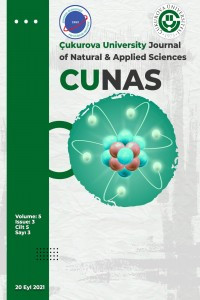Developing an Automation System for Conflictual Returns Using Machine Learning
Developing an Automation System for Conflictual Returns Using Machine Learning
Conflictual returns generate a considerable amount of operational cost in the e-commerce world. Conflictual returns occur in a marketplace when a customer returns a product for certain reasons (broken, missing products, etc.), the seller does not accept the return, and the case becomes unresolved. In the case of conflictual returns, Trendyol needs to resolve the issue as the mediator platform. The decision is made by operators inspecting the customer, the seller, and the case. This process consumes lots of time and human resources. This study aims to automate the resolution of conflictual returns by developing machine learning models based on Logistic Regression (LogReg), CatBoost, and LightGBM. The desired outcome of the study is to make the same decisions on the conflictual returns as the operators as much as possible. The success of the classification models has been evaluated by using the precision, recall, and the area under the curve (AUC)-score metrics. The results show that the proposed LightGBM-based model exhibits the best performance in distinguishing the conflictual returns. The automation of this process will be of great benefit in terms of operational efficiency.
Keywords:
Data-driven decision making, machine learning, feature selection, e-commerce, classification,
___
- [1] Zhu, Y., Li, J., He, J., Quanz, B. L. and Deshpande, A. A. (2018) “A Local Algorithm for Product Return Prediction in E-Commerce”. In: Proc. of the International Joint Conference on Artificial Intelligence, pp. 3718-3724.
- [2] Heilig, L., Hofer, J., Lessmann, S. and Voß, S. (2016) “Data-Driven Product Returns Prediction: A Cloud-Based Ensemble Selection Approach”. In: Proc. of the 24th European Conference on Information Systems, pp. 1-10.
- [3] Minastireanu, E. A. and Mesnita, G. (2019) “Light GBM Machine Learning Algorithm to Online Click Fraud Detection“. Journal of Information Assurance & Cyber security, Article ID 263928.
- [4] Pallathadka, H., Ramirez-Asis, E. H., Loli-Poma T. P. et al. (2021) “Applications of artificial intelligence in business management, e-commerce and finance”, Materials Today: Proceedings, https://doi.org/10.1016/j.matpr.2021.06.419.
- [5] Moorthi, K., Dhiman, G., Arulprakash P. et al. (2021) “A survey on impact of data analytics techniques in E-commerce”, Materials Today: Proceedings, https://doi.org/10.1016/-j.matpr.2020.10.867.
- [6] Boateng, E. and Abaye, D. (2019) “A Review of the Logistic Regression Model with Emphasis on Medical Research”. Journal of Data Analysis and Information Processing, vol. 7, pp. 190-207.
- [7] Hancock, J. T., Khoshgoftaar, T. M. (2020) “CatBoost for big data: an interdisciplinary review”. Journal of Big Data, vol. 7, no. 1, p. 94.
- [8] Ke, G., Meng, Q., Finley, T. et al. (2017) “LightGBM: a highly efficient gradient boosting decision tree”. In: Proc. of the 31st International Conference on Neural Information Processing Systems. New York, USA, pp. 3149–3157.
- [9] Öztürk, M. M. (2019) “The impact of parameter optimization of ensemble learning on defect prediction”. Computer Science Journal of Moldova, vol. 27, no. 1, pp. 85-128.
- Yayın Aralığı: Yılda 4 Sayı
- Başlangıç: 2022
- Yayıncı: Çukurova Üniversitesi
Sayıdaki Diğer Makaleler
Mahmut DAĞDEVİREN, Yılmaz ERBİL
Hüsniye ARDİC ALİDAGİ, Seda ÇETİNDERE
Developing an Automation System for Conflictual Returns Using Machine Learning
Elif Melis KILIÇ, Mehmet Nezir ALP, Akasya AKYUZ, Fatih ABUT, Fatih AKAY
